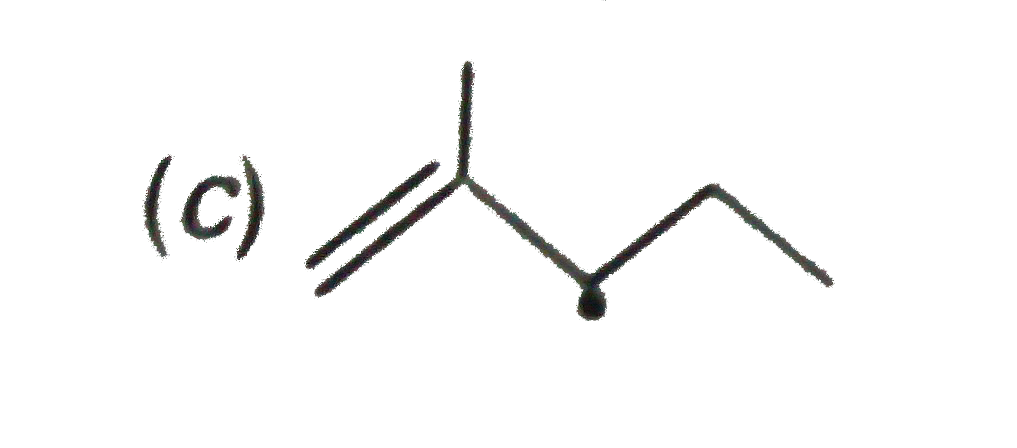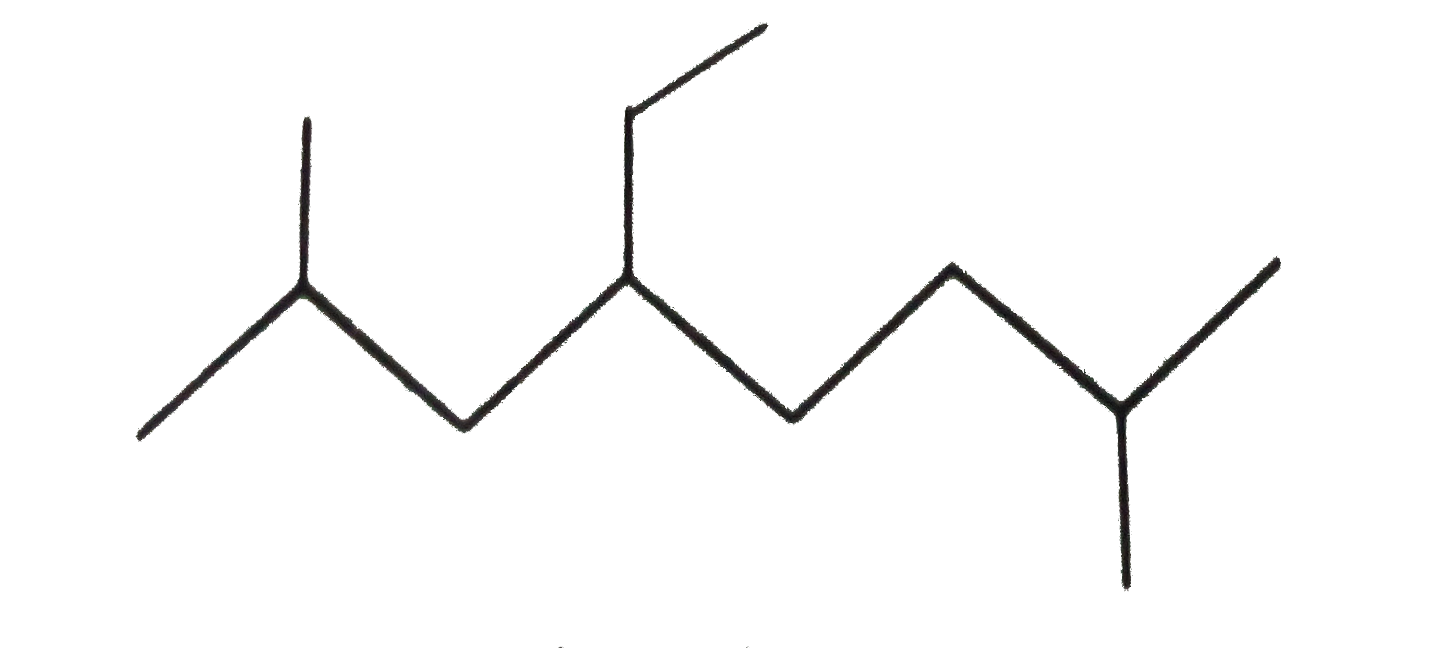The resonance effect is defined as 'the polarity produced in the molecule by the interaction of two π-bonds or between a π-bond and lone pair of electrons present on an adjacent atom.' The effect is transmitted through the chain.
In positive resonance effect, the transfer of electrons is away from an atom or substituent group attached to the conjugated system. This electron displacement makes certain positions in the molecule of high electron densities. In negative resonance effect, the transfer of electrons is towards the atom or substituent group attached to the conjugated system.
Which of the following free radicals is the most stable ?




The correct Answer is:C
To determine which free radical is the most stable among the given options, we need to analyze the stability of free radicals based on the concepts of hyperconjugation and resonance.
1. Understand the Stability of Free Radicals:
- Free radicals are stabilized by hyperconjugation and resonance.
- Hyperconjugation involves the interaction of σ-bonds (typically C-H or C-C bonds) with an adjacent empty p-orbital of the radical.
- Resonance involves the delocalization of electrons across adjacent π-bonds or lone pairs.
2. Identify the Free Radicals:
- Let's denote the free radicals as A, B, C, and D based on the options provided (though not specified in the question).
- For each radical, we will count the number of alpha hydrogens and assess the potential for resonance.
3. Analyze Each Free Radical:
- Radical A:
- Contains 2 alpha hydrogens.
- Limited stabilization due to fewer hydrogens.
- Radical B:
- Contains 5 alpha hydrogens (3 from one side and 2 from another).
- High potential for hyperconjugation, which increases stability.
- Radical C:
- Contains 2 alpha hydrogens.
- Exhibits resonance due to the presence of a double bond that can interact with the radical.
- Radical D:
- Contains no alpha hydrogens.
- Stabilization is only through resonance, which is less effective without hyperconjugation.
4. Compare Stability:
- Radical B has the highest number of alpha hydrogens (5), leading to significant hyperconjugation.
- Radical C has resonance stabilization but fewer alpha hydrogens (2).
- Radical A and Radical D are less stable due to fewer alpha hydrogens and limited resonance.
5. Conclusion:
- Based on the analysis, Radical B is the most stable free radical due to the combination of high hyperconjugation and potential resonance stabilization.
Final Answer:
The most stable free radical is Radical B.
- Free radicals are stabilized by hyperconjugation and resonance.
- Hyperconjugation involves the interaction of σ-bonds (typically C-H or C-C bonds) with an adjacent empty p-orbital of the radical.
- Resonance involves the delocalization of electrons across adjacent π-bonds or lone pairs.
- Let's denote the free radicals as A, B, C, and D based on the options provided (though not specified in the question).
- For each radical, we will count the number of alpha hydrogens and assess the potential for resonance.
- Radical A:
- Contains 2 alpha hydrogens.
- Limited stabilization due to fewer hydrogens.
- Radical B:
- Contains 5 alpha hydrogens (3 from one side and 2 from another).
- High potential for hyperconjugation, which increases stability.
- Radical C:
- Contains 2 alpha hydrogens.
- Exhibits resonance due to the presence of a double bond that can interact with the radical.
- Radical D:
- Contains no alpha hydrogens.
- Stabilization is only through resonance, which is less effective without hyperconjugation.
- Radical B has the highest number of alpha hydrogens (5), leading to significant hyperconjugation.
- Radical C has resonance stabilization but fewer alpha hydrogens (2).
- Radical A and Radical D are less stable due to fewer alpha hydrogens and limited resonance.
- Based on the analysis, Radical B is the most stable free radical due to the combination of high hyperconjugation and potential resonance stabilization.
The most stable free radical is Radical B.
Similar Questions
The resonance effect is defined as 'the polarity produced in the molecule by the interaction of two π-bonds or between a π-bond and lone pair of electrons present on an adjacentatom.' The effect is transmitted through the chain.
In positive resonance effect, the transfer of electrons is away from an atom or substituent group attached to the conjugated system. This electron displacement makes certain positions in the molecule of high electron densities. In negative resonance effect, the transfer of electrons is towards the atom or substituent group attached to the conjugated system.
Which of the following carboxylate ions is the most stable ?
View SolutionThe resonance effect is defined as 'the polarity produced in the molecule by the interaction of two π-bonds or between a π-bond and lone pair of electrons present on an adjacentatom.' The effect is transmitted through the chain.
In positive resonance effect, the transfer of electrons is away from an atom or substituent group attached to the conjugated system. This electron displacement makes certain positions in the molecule of high electron densities. In negative resonance effect, the transfer of electrons is towards the atom or substituent group attached to the conjugated system.
Which of the following shows +M effect ?
View Solution
Knowledge Check
The number of lone pair of electrons on each atom of oxygen molecule is
A1B2C3Dnil
The resonance effect is defined as 'the polarity produced in the molecule by the interaction of two π-bonds or between a π-bond and lone pair of electrons present on an adjacentatom.' The effect is transmitted through the chain.
In positive resonance effect, the transfer of electrons is away from an atom or substituent group attached to the conjugated system. This electron displacement makes certain positions in the molecule of high electron densities. In negative resonance effect, the transfer of electrons is towards the atom or substituent group attached to the conjugated system.
What is the IUPAC name for :

View SolutionThe resonance effect is defined as 'the polarity produced in the molecule by the interaction of two π-bonds or between a π-bond and lone pair of electrons present on an adjacentatom.' The effect is transmitted through the chain.
In positive resonance effect, the transfer of electrons is away from an atom or substituent group attached to the conjugated system. This electron displacement makes certain positions in the molecule of high electron densities. In negative resonance effect, the transfer of electrons is towards the atom or substituent group attached to the conjugated system.
Which of the following does not show resonance effect ?
View SolutionThe resonance effect is defined as 'the polarity produced in the molecule by the interaction of two π-bonds or between a π-bond and lone pair of electrons present on an adjacentatom.' The effect is transmitted through the chain.
In positive resonance effect, the transfer of electrons is away from an atom or substituent group attached to the conjugated system. This electron displacement makes certain positions in the molecule of high electron densities. In negative resonance effect, the transfer of electrons is towards the atom or substituent group attached to the conjugated system.
Which of the following intermediates is pyramidal in shape ?
View SolutionThe resonance effect is defined as 'the polarity produced in the molecule by the interaction of two π-bonds or between a π-bond and lone pair of electrons present on an adjacentatom.' The effect is transmitted through the chain.
In positive resonance effect, the transfer of electrons is away from an atom or substituent group attached to the conjugated system. This electron displacement makes certain positions in the molecule of high electron densities. In negative resonance effect, the transfer of electrons is towards the atom or substituent group attached to the conjugated system.
The correct statement regarding a carbonyl compound with a hydrogen atom on its alpha carbon, is
View SolutionThe number of lone pairs of electrons present in central atom of ClF3 is:
View SolutionDue to screening effect of electrons in an atom
View SolutionWhich of the following represent most effective π-bond
View Solution
